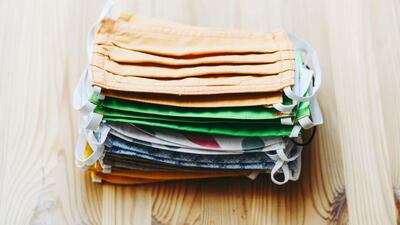With face masks now mandatory across the UAE, many people are moving away from using disposables and investing in a reusable, cloth alternative.
But if you are required to wear your mask every time you leave your home, how often should it be washed, and, more importantly, what is the safest way to do so?
Here are some tips on the best ways to wash and handle your reusable mask:
How often should reusable cloth face masks be washed or cleaned?
Cloth face coverings should be routinely washed depending on the frequency of use, says the Mayo Clinic. While this may not be possible after every use if you are leaving the house several times a day to go to the shops or for exercise, you should aim to wash your mask at least once a day.
How should your face mask be washed?
Machine washing is the best and safest way to ensure that your mask is cleaned thoroughly. Regular laundry detergent should suffice, and the wash should be placed on a high temperature setting to ensure all germs are killed. Alternatively, soaking and washing your mask by hand with detergent is OK on days when you are unable to put it in with a full wash. Avoid using bleach to clean your mask.
How do I safely remove a used cloth face mask?
Be careful not to touch your eyes, nose or mouth as you remove your face mask, or if you are pulling it down temporarily, for example to eat or drink. Be careful to avoid touching the inside of your mask if you plan to put it back on. Also ensure you wash or sanitise your hands directly after removal.
How do I store my cloth face mask?
Masks should not be placed in pockets for later use, the Mayo Clinic says. To store or transport one, carefully fold it so the contaminated outside faces inwards and against itself. Place the mask in a clean or new paper bag before washing your hands thoroughly.
Homemade masks
Thinking of making your own mask? “Pore size is very important in masks, since it affects what can permeate it,” says Dr Satyam Parmar, laboratory head and chairman of the infection prevention and control committee at RAK Hospital.
"But when making home-made masks, it's not easy to figure out the pore size. Therefore, use cotton material, which is light, breathable, soft and pliable. It should not be too thick nor too thin. One layer is fine, but adding another layer is better.
"Ideally, commercially produced masks are not reusable, while home-made masks – even though they are not the first option – can be reused after washing with soap and antiseptic solution," he says.


















